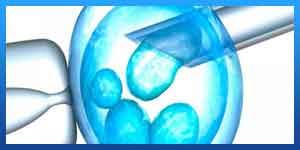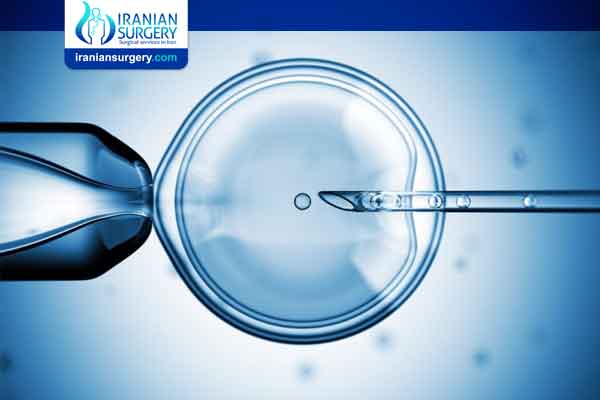Preimplantation Genetic Diagnosis (PGD)
What is Preimplantation Genetic Diagnosis (PGD)?
How much does PGD cost in Iran?
How much does Gender selection cost in Iran ?
Pre-implantation genetic diagnosis (PGD) is a genetic testing procedure performed on embryos created with in-vitro fertilization by examining an embryo for a specific genetic mutation known to cause serious disease. It enables people with an inheritable condition in their family to avoid passing it on to their children.
________________________________________________________________________________________
Infertility Treatment with Iranian Surgery Specialists
Iranian Surgery doctors have helped thousands of people begin or expand their families over the years. Your compassionate team of experts can evaluate the cause of your infertility, and help you find a treatment plan that's the right fit for you.
Iranian Surgery specialists in obstetrics and gynecology are leaders in infertility treatments, and will work with you to conceive via medication, surgery, in vitro fertilization (IVF) or another method.
Iranian Surgery doctors have extensive experience in diagnosing and treating infertility in couples. Each year, our experts see nearly 400 men and women with infertility issues.
Advanced diagnosis and treatment
Our team is a leader in advanced infertility treatments, including oocyte preservation, fertility preservation, and treatment of uterine fibroids and endometriosis. So, you can freeze oocytes to create an appropriate number of embryos. The Iranian Surgery team is constantly assessing the latest evidence in fertility treatments to give you the best options while minimizing delays and unnecessary tests.

_________________________________________________________________________________________
Best infertility doctors in Iran

Dr. Maryam Khosromehr
- Dr. Maryam Khosro Mehr is a gynecologist and infertility specialist and has a specialized board. Dr. Khosro Mehr is present in the obstetrics and gynecology department of Pars, Pasteurno and Sarem hospitals.
Educational background:
General Practitioner. Shahid Beheshti University of Medical Sciences
Specialist in General Surgery . Shahid Beheshti University of Medical Sciences
Advanced Laparoscopic Fellowship. Iran University of Medical Sciences
TQM (Total Quality Management) course.

Dr. Zolghadri
Dr. Jaleh Zolghadri is a specialist reproductive medicine and Infertility, IVF and recurrent pregnancy loss since 1992
- Professional Work Experience
1- Specialist Reproductive Medicine and Infertility, IVF and recurrent pregnancy loss since 1992
2- Reproductive Surgery (laparoscopic and Hysteroscopic procedures)
3- Full Professor of OB/GYN, Consultant, Shiraz University of Medical Sciences since 1990.4- Working and supervising infertility fellowship residents in ART & Infertility ward (1991 -2020)
5- Head of the Recurrent Abortion clinic, Shiraz University of Medical Sciences (since 1998)
6- performing many infertility techniques like Microinjection ,Zift, Egg and Embryo donation, Surrogate uterus ,Sex selection, and PGD/PGS
7-Infertility Consultant in Avicenna center of Infertility and recurrent miscarriage
8- Preforming many female Cosmetic surgery like Labioplasty, vaginal rejuvination, tightening and whitening by Monaliza Laser and labia filler injection,PRP and other Aesthetic procedures.
- Membership in major
- professional societies
1- Member of American Society for Reproduction Medicine (ASRM)
2- Member of American Association of Gynecologic Laparoscopists (AAGL)
3- Member of Middle East Fertility Society (MEFS)
4- Member of Iranian Society for Reproduction Medicine (ISRM)
5- Member of Iranian Society of Surgeon
6- member of American Aesthetic Surgery Society
General information about PGD
The following table describes general information about PGD including PGD cost in Iran, recovery time, and to name but a few.
General Information |
|
Cost | $ 1000 |
Anesthesia | Local |
Hospital Stay | No |
Back to Work | 1 Day |
Minimum Stay in Iran | 9 Weeks |
Read more about : Icsi procedure step by step
Read more about : How many days after period is frozen embryo transfer?
Before Preimplantation Genetic Diagnosis (PGD)
Who should consider PGD?
PGD avoids pregnancy termination as it allows selection of an embryo free of the genetic disease at issue before pregnancy is established. PGD is available for almost any inherited condition for which the exact mutation is known. PGD is best suited for:
. Individuals with known single gene disorder, e.g. cystic fibrosis, cystic disease, Tay Sachs disease.
. Individuals with a chromosomal re-arrangement, e.g. chromosomal translocation in which a segment of a chromosome is found at a location other than its normal place.
. Couple with a child known to have a genetic mutation.
. Couples who desire to match stem cells when a family member is in need of a tissue donor.
Read more about IVF process timeline
What risks are involved?
The process of IVF and PGD poses some risks to the woman and the embryo. These may include:
. Health risks of the IVF cycle
. An embryo may not develop after fertilization of an egg
. Not all embryos will be suitable for biopsy
. The embryo may not develop after biopsy
. There may not be any unaffected embryos available for transfer
. Test results may be inconclusive
. Results are not 100% accurate
. No pregnancy is achieved, even after the transfer of an unaffected embryo.
Read more about : ZIFT infertility treatment
During Preimplantation Genetic Diagnosis (PGD)
Preimplantation Genetic Diagnosis (PGD) process Step by step
. Step 1: Stimulation of the ovaries
In order to create embryos for genetic testing, the ovaries have to be artificially stimulated using hormones to produce several eggs at the same time.
Because a significant number of a couple’s embryos are likely to be affected by the genetic or chromosomal abnormality, a large number of embryos need to be created for the best chances of success.
. Step 2: Collection of eggs from the ovaries
At the appropriate time, the eggs are removed in during a surgical procedure known as egg retrieval. Once the eggs are removed, they are inspected to determine which are mature and normal appearing.
. Step 3: Insemination/injection of sperm
Fertilisation during PGD will be done either by:
. In Vitro Fertilisation (IVF): Sperm and eggs are placed together in a culture dish to allow fertilisation to occur.
. Intracytoplasmic Sperm Injection (ICSI): A single sperm is injected in the centre of an egg. This technique is used for conditions caused by a single faulty gene.
Step 4: Fertilisation
The morning after injection/insemination of the sperm, the embryologist carefully examines each egg to see if fertilisation has occurred.
Step 5: Embryo biopsy
The eggs that were successfully fertilised are grown in the laboratory for 5-6 days when the embryo forms what is called a blastocyst of about 100-150 cells. At this stage trophectoderm biopsy (the cells which will form the placenta) takes place.
The removal of these cells should not harm the embryo.
Step 6: Embryo Testing
The cells are tested to see if the embryo from which they were removed contains the abnormality that causes the genetic condition.
Step 7: Embryo Transfer
Only those embryos that do not have the specific genetic condition that was tested for will be transplanted into the woman’s uterus. Usually one embryo will be transferred to the uterus at any one time to avoid the possibility of multiple births (more than one baby in a pregnancy).
Any suitable remaining unaffected embryos will be frozen for later use.
Those embryos that are affected by the inherited condition are allowed to perish or couples are asked if they would consider allowing these embryos to be donated for research and training.

Step 8: Pregnancy Test
Twelve days after the embryo transfer, the woman is given a pregnancy test. A positive pregnancy test means that an embryo has implanted.
Read more about : Can i bend down after embryo transfer?
Read more about : Can you have twins with ICSI?
After Preimplantation Genetic Diagnosis (PGD)
Accuracy of Preimplantation Genetic Diagnosis
The accuracy of PGD will vary, and there is the possibility that testing may not be 100% reliable or conclusive. However, testing is 98-99% accurate for most couples. The risks are dependent upon the condition for which PGD is being offered and the couple’s individual test results.
All patients are offered confirmatory prenatal testing (amniocentesis or chorionic villus sampling) if PGD results in a pregnancy.
What is the Chance of Having a Baby with PGD?
It is difficult to assess success rates for PGD because there is currently little data available. As with most fertility treatments, success depends on many factors, including the woman’s age and weight.
Additionally, sometimes no embryos are suitable for transfer to the womb, for reasons including:
. Not enough eggs were produced or fertilised
. Embryos do not develop to the balstocyst stage
. Embryos do not survive the biopsy, although this is a rare event
. All the embryos were affected by the genetic condition.
Therefore, a pregnancy cannot be guaranteed using PGD.
Preimplantation Genetic Diagnosis (PGD) Cost
The cost of Preimplantation Genetic Diagnosis (PGD) in Iran is $ 1000.
Read more about 2nd iui success rate
Read more about Virgin tightening surgery before and after
Read more about Ovarian cyst size chart
Read more about : Type of Infertility Treatment in Iran




4 Comments
I need prices for all types of gender selection methods I need a boy for my last baby to be pls help n reply thanks I’m planning to come from Pakistan in 3 weeks pls advice help.
Hello,
Gender selection is done in Iran and you can have gender selection by paying $ 1500- 2000.
For more information, please leave us a message on WhatsApp.
Hello Doctor
hope you are good
I was wondering if you can explain to me the difference between PGD and Pgs?
regards Jamie
Hello Jamie
the answer is PGS analyzes biopsied cells from the embryo to screen for potential genetic abnormalities when there are no known potentially inherited disorders. PGD, on the other hand, uses the same process to detect a specific disorder that has a high probability of being passed down from parents to their offspring.
for more. information you can message our agents via what’s app on this number
+989019290946